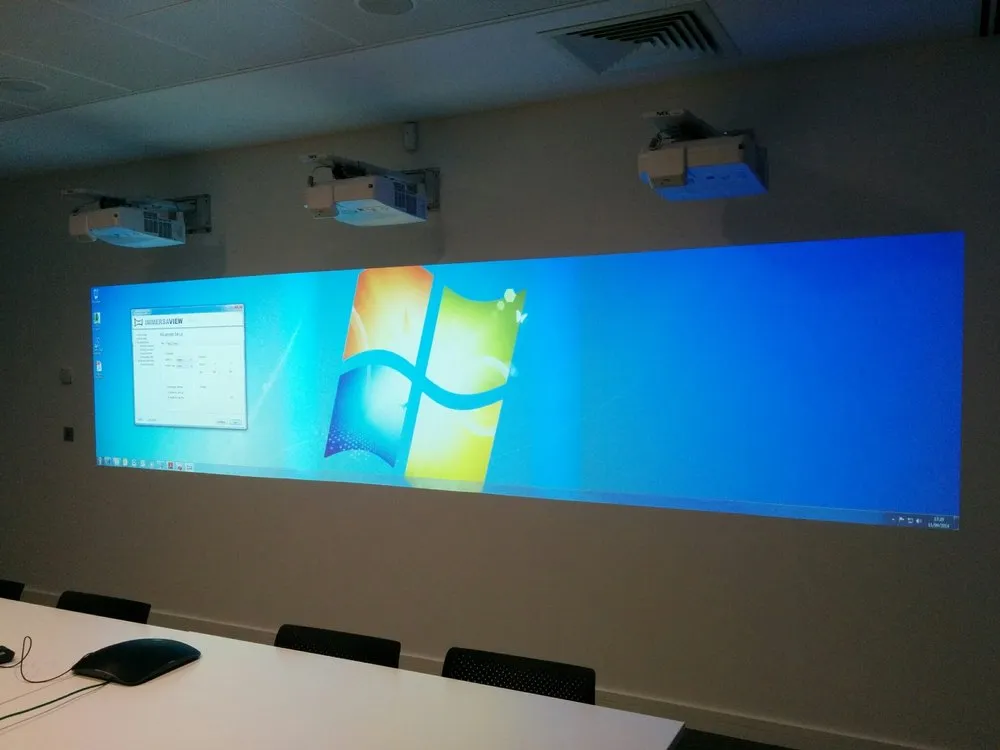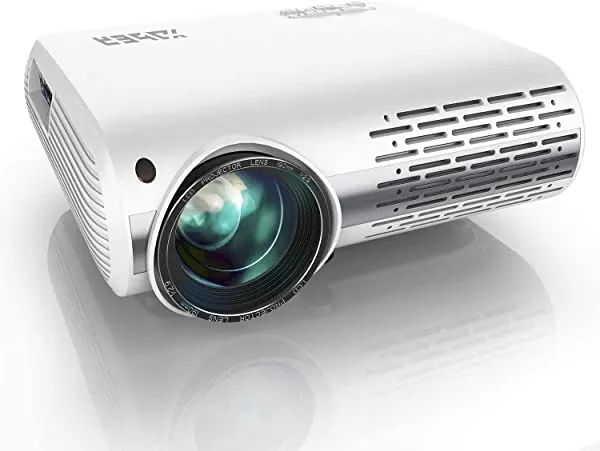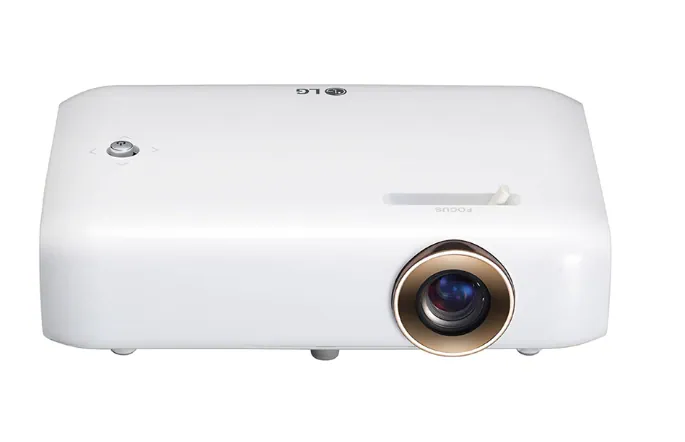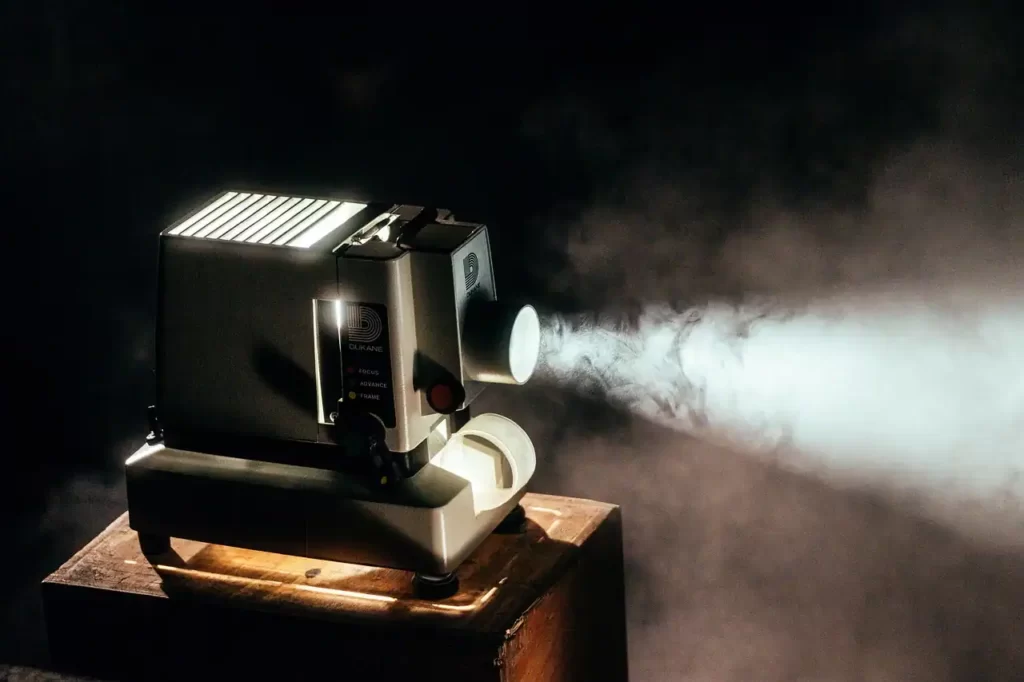Projectors are small devices that are used for projecting images onto large surfaces like walls, screens, or even buildings. Today, Projectors are widely used in a variety of settings, including movie theaters, corporate offices, classrooms, and many other places.
In this post, we will tell you everything you need to know about projectors, from their parts and features to their types and specs. We also give you tips on choosing the right projector and using it effectively.
What is a projector?
A Projector is a device that uses light to create images on a screen. The images can be created on any surface.
They can be projected on a wall, on a screen, on a piece of paper, or on a whiteboard.
In this article, we will describe what are the main parts of a project, how it works, and how you can use it to project images on any surface.
What are the main parts of a projector?
The parts that make up a projector are:
Lamp:
One of the most important parts of a projector is the lamp. The lamp is where all of the energy that makes the light come out of the projector comes from. The lamp is usually made of metal and glass. This is why the lamp is also called the light source.

The lamp produces the actual light. The lamp is used to produce light. It consists of a light bulb, a reflector, and a power supply.
Lens:
A lens is a very important part of the projector. Without a lens, there is no way to focus the image onto the screen.
The lens projects the light onto the screen. A projector uses a combination of lenses and mirrors to focus the light. The lens focuses the light onto the screen and the mirror focuses the light coming from the lamp. The combination of these two systems creates the final image.
It’s the thing that actually projects the image onto the screen. The lens is part of the projector that focuses the light coming from the lamp.
Optical System:
An optical system is the third main part of a projector. It helps the projector to create the images on the screen. With the help of equipped Prism, light splits into red, green, and blue colors.
The optical system is where all of the light from the lamp is focused on the screen. The focus is where the light is focused.
Housing:
The housing is the casing of the lamp. The housing is made of metal or plastic. The housing also contains reflectors, which are used to project light onto a screen.
It holds the parts of the lamp together and protects them. The housing is also called lamp housing.
Connectors:

The projector has a few different types of connectors like LAN Connectors, HDMI, VGA, A/V, and USB Connectors. It can have a separate port for connecting an external device. It provides you to connect your projector o a computer or a TV, or other such devices.
You can also connect the projector to a computer or TV with an HDMI cable. This will allow you to view the images on a big screen.
Control options:
The projector has a control panel. It is the main control panel for the projector. The control panel is where you turn the projector on and off. It is also where you change the settings.
The remote control is the second control panel. The remote control is used to adjust the projector settings. You can adjust the brightness, contrast, color, size, and focus.
Power supply:
The power supply is the part that supplies electricity to the lamp.
The power supply converts electricity into voltage and current. It is sometimes referred to as the power supply unit.
The Fan:
Projector fans play a very important role in the life of a projector. It helps the projector to cool down the lamp. The projector has a fan that cools it down when you use the lamp. The cooling vent is located at the back of the projector. It is designed to let the air out.
The exhaust vent is a pipe that goes through the projector. The exhaust vent is used to vent the hot air out of the projector.
How do projectors work?
The projector uses a light source to create an image on a screen. This light source may be either a laser beam or a light bulb. A laser beam is more powerful than a light bulb. It has a greater intensity.
Laser beams are created using a laser and a lens. Laser beams are focused on a small spot. They can be used to create a picture on a screen.

The laser beam is sent through the lens and is focused onto the screen. The image is then created and displayed.
The image is created by sending the laser beams through a digital mirror device (DMD). DMDs are used to display digital images and videos. A DMD contains millions of microscopic mirrors.
What is a projector: How can you use a projector to project images on any surface?
You can project images on any surface using a laser projector. When you turn on the projector, the light source will illuminate the projection lens. Once this happens, you can start projecting images on any surface.

If you want to project images on a wall, you should simply place the projector on a table, move the wall against the table, and turn on the projector.
You should repeat this process until you finish the project. The same procedure applies if you want to project images on a ceiling, floor, or any other surface.
What are the different types of projectors?
There are many types of projectors available in the market and they are available in several shapes and sizes. And each type of projector has different uses. Here are some of the most common types of projectors:
Slide projectors
This is one of the oldest types of projectors. It is a very simple device. Slide projectors use a series of slides to display a picture. They are inexpensive and easy to use. Slide projectors are used to project slides that contain images. The projector will create a duplicate image on the screen and then project the slides.
Video or Movie Projectors

Video projectors are used to project videos onto a large screen. They are used in classrooms, offices, home theaters, and cinemas. They can be used to display motion pictures or movies on a larger screen.
Digital Projectors
A projector is a machine that projects images. A projector can be found in almost every household. The projector makes it possible for you to watch movies on large-sized screens or play video games on your television. There are two kinds of projectors: digital and analog. Both types of projectors consist of an electronic device, a housing, and a lamp. The digital projector includes several components, including a lamp, a light source, a liquid crystal display (LCD) panel, a digital projection unit, and a cooling fan.

Advantages and Disadvantages of different types of projectors:
LCD vs DLP Projectors:
There are many types of projectors based on the different technology. One type is an LCD projector. The projector in your car uses this technology. Most LCD projectors are portable and easy to use. They can also be mounted easily on a wall. They usually have a long lamp life and a short throw ratio. Throw ratio means the distance between the screen and the projector. If the throw ratio is low, the projector can be placed far from the screen. If the throw ratio is high, the projector can be placed close to the screen.

Another type of projector is DLP. These projectors use mirrors instead of lenses. They are compact and lightweight. They are also cheaper than LCD projectors.

LED vs Laser Projectors:
LED projectors are a type of projectors that use light-emitting diodes (LEDs) instead of lasers to create images. LED projects usually cost less than 1/2 of laser projects. They do have some disadvantages, however. The light from LED projectors tends to be more “yellow” than the light from lasers. The light from LED projectors is also less even than the light from lasers.

Laser projectors are often used for home entertainment and in commercial venues. These projectors are very bright, and they have a high resolution. They are also compact and portable. However, laser projectors can be expensive.

What are the Uses and Applications of Projectors?

Projectors are used for many things. Here are some of the most common uses for projectors:
- To make a presentation with slides
- To create advertising banners
- To make teaching materials easier in classes
- To display sports events or movies on TV screens
- To entertain guests at a wedding or birthday party
- For creating animations
- To create interactive whiteboards
- For showing charts, graphs, and data
- To show the location of things such as a GPS device or a phone
- For product promotions and giveaways
You Can Also Check:
- Uses of Projectors That You May Haven’t Tried Yet!
- Learn All About Projector Specs: An Ultimate Projector’s Guide!
- Different Projector Resolutions Explained: A Detailed Guide
- What are The Best Projector Aspect Ratios? Briefly Explained!
What are the advantages of using projectors?
The top 5 advantages of using a projector are
1. Easy to use:
Projectors are very simple to use means they can be easy to install. You don’t have to spend much time to learn how to operate it. It is also easy to operate. These devices come with easy-to-use software. You will only need to follow a few simple instructions. You can turn on the projector and adjust it as you like.
2. Portable:
If you want to show your movies to your friends, family members, or other people, you can use a projector. If you have a laptop with you, you can also use a projector.
Related: What Is a Mini Projector?
A laptop can be made into a projector. All you have to do is attach the projector to it. You don’t have to buy a new device. You can even use the built-in projector on your computer.
3. Convenient:
Projectors can be used in multiple places. They are very convenient to use. You can use a projector in almost any room since are portable and are small and lightweight. It is easy to carry around these devices.
4. High-quality images:
Projectors are usually equipped with high-quality digital projectors that provide clear and sharp images. These projectors are also quite cheap.
5. Power saving:
Projectors can save energy. Most of the time, they can display a picture in lower light levels. You don’t have to change the brightness all the time.
How to choose the best projector?
There are many projectors on the market today. You have to find the one that is right for you. When choosing a projector, you should consider the following factors:
Resolution:
The first thing you need to think about is the resolution. The higher the resolution, the better the picture quality will be. If you want to be able to see the image clearly, it is important that you get a projector with a resolution of at least 720p.

If you want to watch movies and play games, you need to have at least a 1080p resolution.
Brightness:
The next thing to consider is brightness. This is how much light is emitted by the projector. The higher the brightness, the better the picture quality will be.
The brightness of the projector will depend on the size of the room you are in. If you are watching a movie in a small room, you need to get a brighter projector. However, if you are watching a movie in a big room, you should get a projector that has a low brightness.
Lumens:
The lumens are how bright the projector is. Lumens are the amount of light that the projector produces. The higher the lumens, the brighter the picture will be.
For Example- A Projector with 7500 lumens is capable of projecting a 60″ projection screen at only 7.2′. With the powerful 7500 lumens capability, you get a gigantic illumination and enhanced dramatic effect. As you can see in below throw chart:

Contrast ratio:
The contrast ratio is how well the image is contrasted. The higher the contrast ratio, the more color detail and contrast you will see.
Power consumption:
The power consumption is how much power it takes to run the projector. If you want a projector that is energy efficient, you should get a projector with low power consumption.
The lower the power consumption, the longer the battery life will be.
Room Size:
You should also consider the size of your room. You should buy a projector that is big enough to fit in your room. You don’t want to have to move it every time you want to watch movies or watch TV.
Recommended:
- Projector Ports: What Are The Ports Available In A Projector?
- What is a Good Amount of Lumens for a Projector?
- What Contrast Ratio is Good for a Projector?
What is a projector – To conclude up
Projectors are used in a variety of situations ranging from home entertainment, presentation use, training, business presentations, and more. When it comes to choosing the right projector for you, there are many factors to consider. The most important is the price, followed by the picture quality, brightness, and contrast ratio. You can also buy a projector with a wide range of features. Some projectors have built-in speakers so that you can watch movies while using them.
As an experienced Software Engineer in a Projection-Based Technology Company, I love sharing my Knowledge to utilize and help others to learn more about Projectors. Thus one can get the right Projector for their needs.



